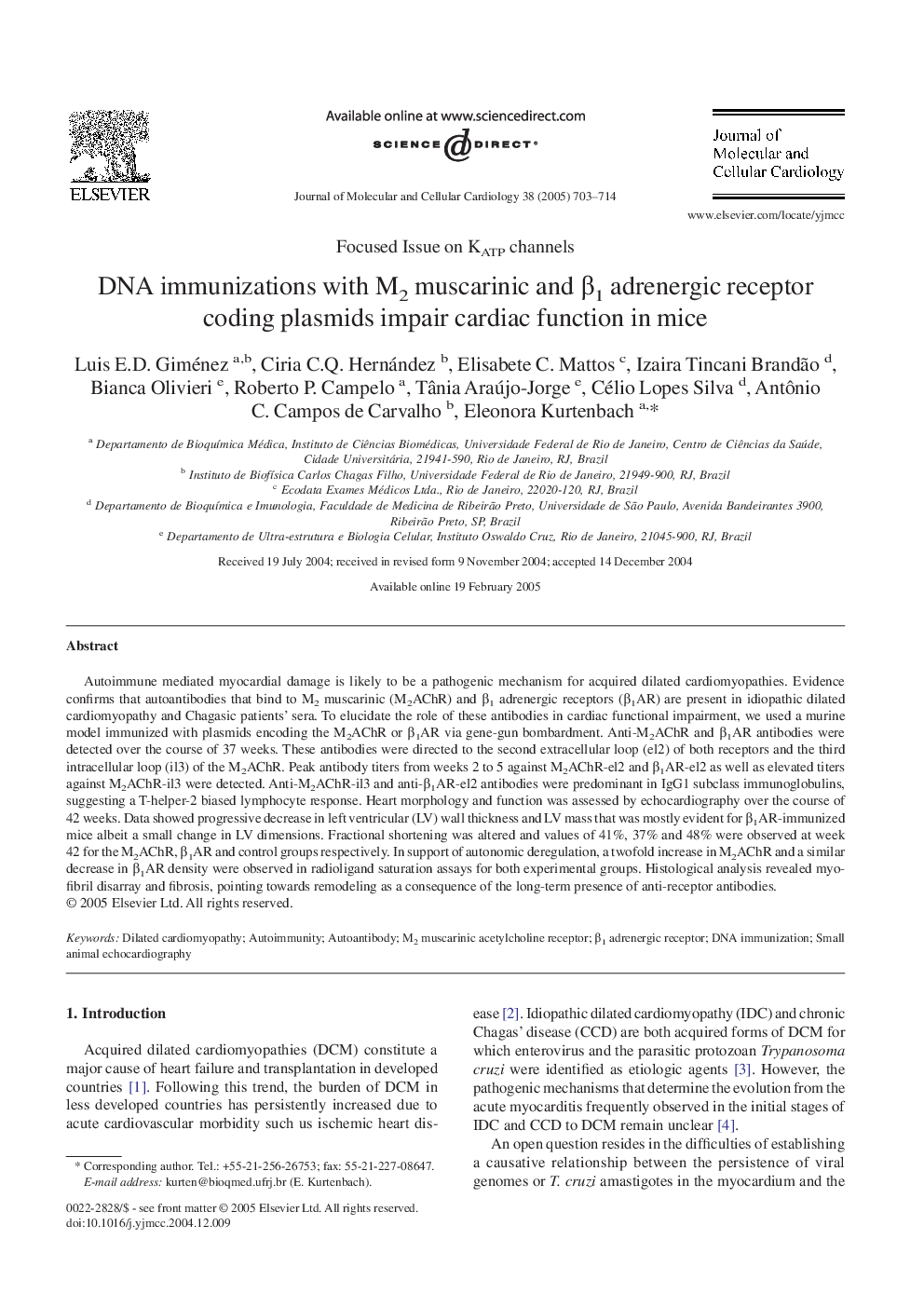| کد مقاله | کد نشریه | سال انتشار | مقاله انگلیسی | نسخه تمام متن |
|---|---|---|---|---|
| 10954311 | 1097894 | 2005 | 12 صفحه PDF | دانلود رایگان |
عنوان انگلیسی مقاله ISI
DNA immunizations with M2 muscarinic and β1 adrenergic receptor coding plasmids impair cardiac function in mice
دانلود مقاله + سفارش ترجمه
دانلود مقاله ISI انگلیسی
رایگان برای ایرانیان
کلمات کلیدی
موضوعات مرتبط
علوم زیستی و بیوفناوری
بیوشیمی، ژنتیک و زیست شناسی مولکولی
بیولوژی سلول
پیش نمایش صفحه اول مقاله

چکیده انگلیسی
Autoimmune mediated myocardial damage is likely to be a pathogenic mechanism for acquired dilated cardiomyopathies. Evidence confirms that autoantibodies that bind to M2 muscarinic (M2AChR) and β1 adrenergic receptors (β1AR) are present in idiopathic dilated cardiomyopathy and Chagasic patients' sera. To elucidate the role of these antibodies in cardiac functional impairment, we used a murine model immunized with plasmids encoding the M2AChR or β1AR via gene-gun bombardment. Anti-M2AChR and β1AR antibodies were detected over the course of 37 weeks. These antibodies were directed to the second extracellular loop (el2) of both receptors and the third intracellular loop (il3) of the M2AChR. Peak antibody titers from weeks 2 to 5 against M2AChR-el2 and β1AR-el2 as well as elevated titers against M2AChR-il3 were detected. Anti-M2AChR-il3 and anti-β1AR-el2 antibodies were predominant in IgG1 subclass immunoglobulins, suggesting a T-helper-2 biased lymphocyte response. Heart morphology and function was assessed by echocardiography over the course of 42 weeks. Data showed progressive decrease in left ventricular (LV) wall thickness and LV mass that was mostly evident for β1AR-immunized mice albeit a small change in LV dimensions. Fractional shortening was altered and values of 41%, 37% and 48% were observed at week 42 for the M2AChR, β1AR and control groups respectively. In support of autonomic deregulation, a twofold increase in M2AChR and a similar decrease in β1AR density were observed in radioligand saturation assays for both experimental groups. Histological analysis revealed myofibril disarray and fibrosis, pointing towards remodeling as a consequence of the long-term presence of anti-receptor antibodies.
ناشر
Database: Elsevier - ScienceDirect (ساینس دایرکت)
Journal: Journal of Molecular and Cellular Cardiology - Volume 38, Issue 5, May 2005, Pages 703-714
Journal: Journal of Molecular and Cellular Cardiology - Volume 38, Issue 5, May 2005, Pages 703-714
نویسندگان
Luis E.D. Giménez, Ciria C.Q. Hernández, Elisabete C. Mattos, Izaira Tincani Brandão, Bianca Olivieri, Roberto P. Campelo, Tânia Araújo-Jorge, Célio Lopes Silva, Antônio C. Campos de Carvalho, Eleonora Kurtenbach,